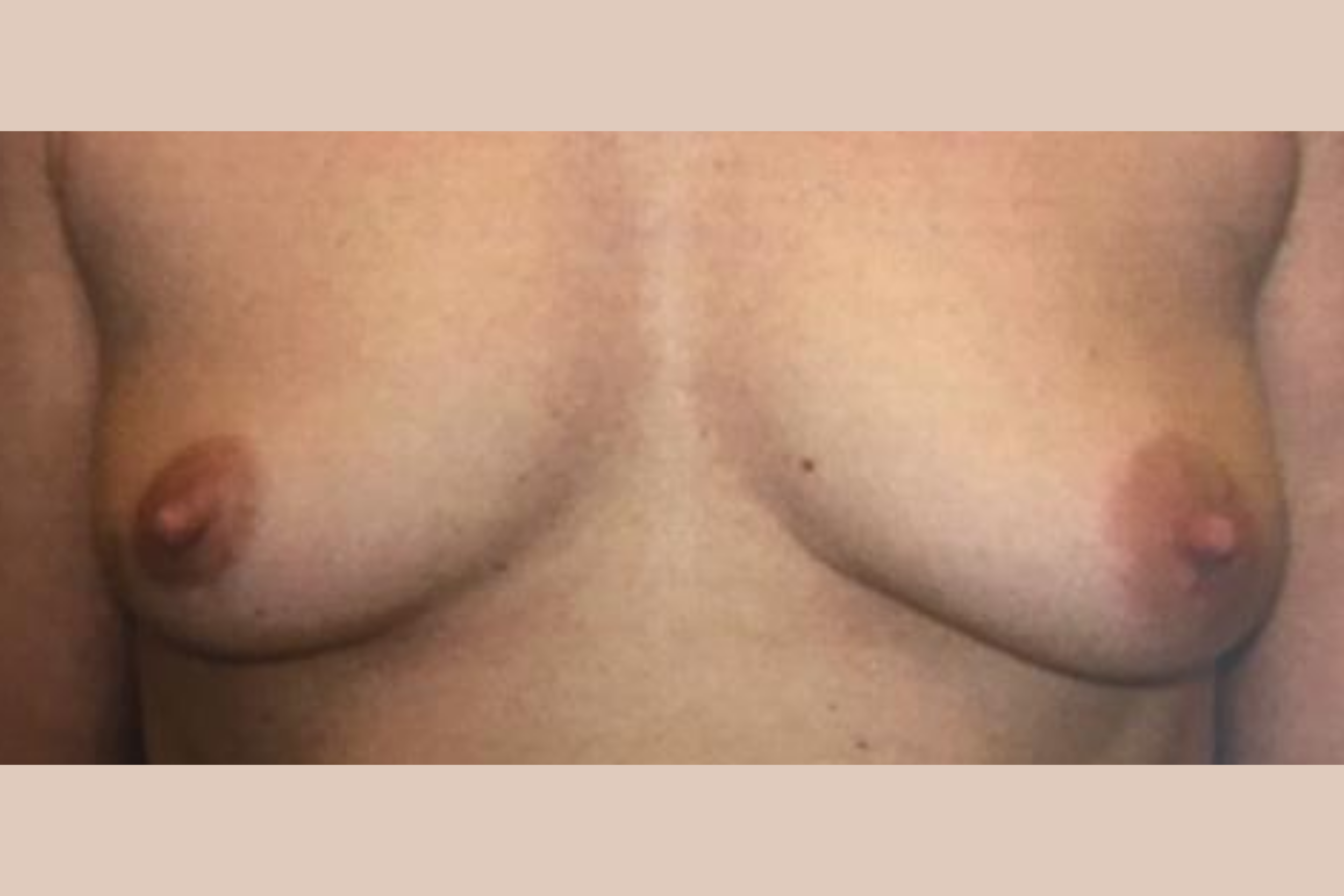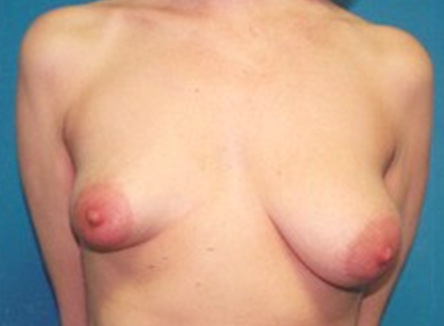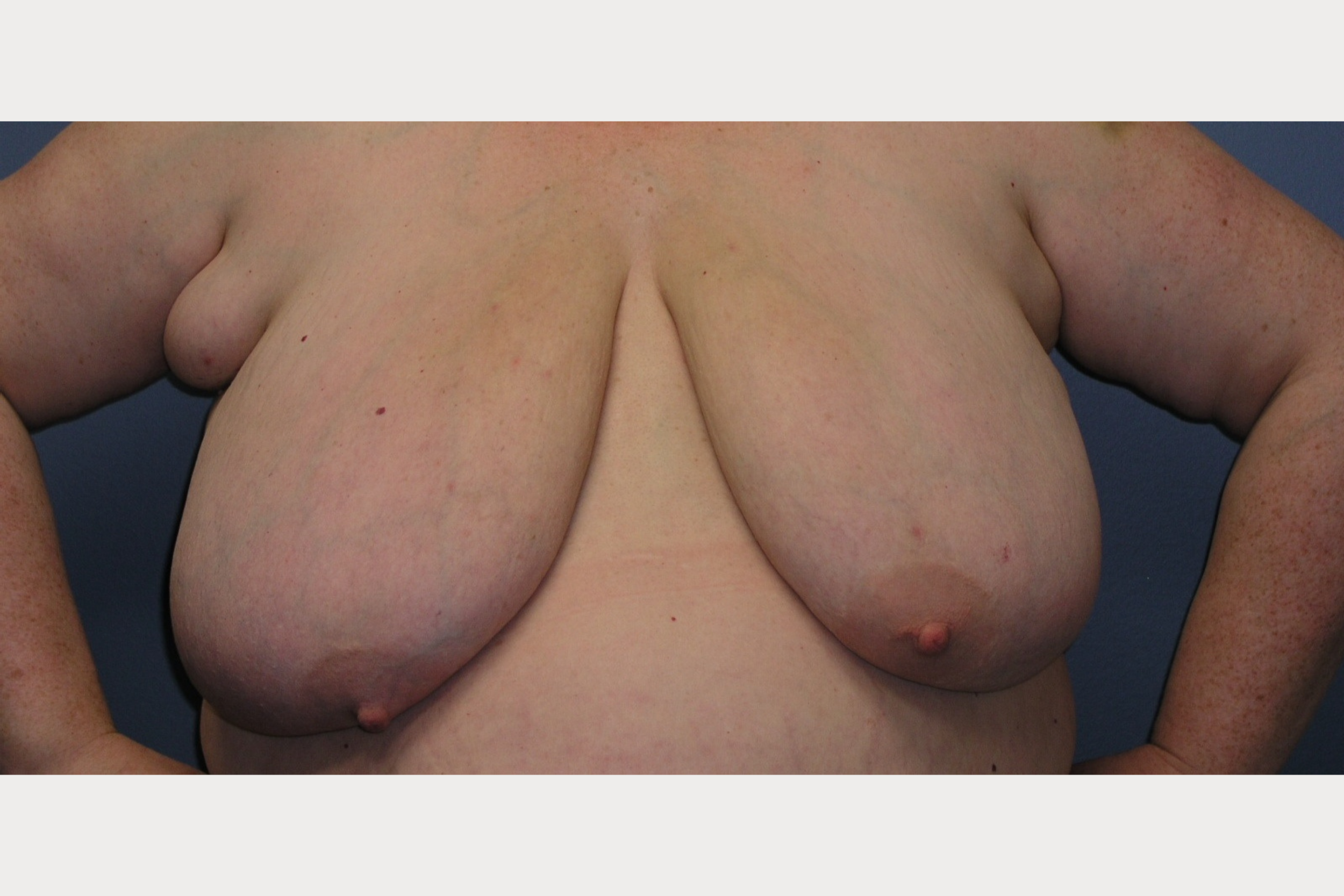
Other Breast Procedures
Navigate to:
Asymmetry Repair
Implant Removal
Axillary Breast
*DISCLAIMER: THIS SITE CONTAINS GRAPHIC & SURGICAL IMAGES THAT MAY BE DISTURBING TO SOME VIEWERS.
THIS SITE IS INTENDED FOR INDIVIDUALS OVER THE AGE OF 18.
**None of the images on this site have been enhanced or photoshopped.
*Tap a patient image to enlarge & view the full series of pre and post-operative images.
Asymmetry Repair
Patient F - Pre-operative and post-operative Breast Asymmetry Correction


Before the Surgery:
+ What is Breast Asymmetry?
If the breasts are symmetrical, both of the breasts are the same size and shape with equal nipple areola size and location. Most women’s breasts are not perfectly symmetrical. There is often a difference in the size, or shape, or both, when comparing your breasts. This is called asymmetry.
+ What is the perfect breast?
Symmetry (both breasts and nipple areola are very similar in size and shape). 40% of the breast volume lies above the nipple areolar complex, and 60% below. The nipple areolar complex is at the apex of the breast mound, with a gentle lower and lateral curve of the breast mound, meeting the chest wall at a defined crease, which matches the opposite breast.
+ What are the types of Asymmetry?
It is unusual for the breasts to be identical. The breasts and the nipple areola may differ in size and shape and location on the chest wall. The chest wall may also be asymmetrical which may produce breast asymmetry.
A consultation with Dr. Giuffre to define the asymmetry, and discuss the surgical options based on the clinical findings, and the patient’s wishes, for correction is recommended.
+ My breasts are quite droopy and one breast is a different size and shape than the other breast. What are my surgical options?
This depends on how severe the droop (ptosis) is, and how large the difference is in your breast size.
+ If you want the droop (ptosis) corrected and you DO want larger breasts:
- If the size difference between the breasts and the ptosis is very minor and is equal on both sides, (same nipple heights), a Breast Augmentation may correct the ptosis, (See Breast Augmentation FAQ).
- If the size difference between the breasts is minor to moderate, the nipple heights are equal, and the droop is very minor, a breast augmentation, adjusting the implant size between the breasts, may correct this minor size asymmetry.
** Please see Patient F Below
If the droop is more significant, (even if it is more on one side than the other) then a breast lift would be required (See Breast Lift FAQ), along with Breast Augmentation, if the patient also wants larger breasts, (See Breast Augmentation FAQ).
If one of the breasts is significantly larger, it's size and shape will be different than the smaller breast: It often sits lower (droops) with a difference in nipple location and size when compared to the smaller breast.
If the patient prefers the larger breast size, then placing a breast implant in the smaller breast will increase the size of the smaller breast, however, will not address the shape difference, nipple location, and nipple size differences. The end result will be asymmetrical and unsatisfactory.
**This can be seen in the photograph below.
The surgical goal is to make both breasts the same shape and size, and then, put a breast implant of the same size into both breasts. In this case, the surgical option is a Bilateral Lift, and, Breast Reduction on the larger breast, with a Bilateral Breast Augmentation using the same size implants in both breasts (after they have been lifted and reduced). This procedure would be done all at the same time.
In the future, if the implants were to be removed, the patient will still have symmetrical breasts without the implants.
+ If you want the droop (ptosis), size and shape difference corrected, but you DO NOT want larger breasts:
If the droop is more significant, but the breast sizes are the same, then a Breast Lift would be required, (See Breast Lift FAQ).
If one breast is significantly larger, and both breasts are droopy (ptotic), and the patient wanted only the breast ptosis and size correction without enlarging the breasts, then only a Breast Lift and Breast Reduction, of the larger breast, would be done to match the opposite breast.
- If the nipple heights on each breast are significantly different, or the areola size on each breast is significantly different, a Breast Lift option can correct this.
- If the actual projection of the nipple is too large or excessive, this can be corrected.
- If the nipple is inverted, this can be corrected.
- If the smaller breast is the correct shape and size for you, and you are wanting to match the larger breast to the smaller breast, the surgical option is a Breast Lift/Reduction on the larger breast, to match the size and shape, and the nipple size and shape, to the smaller breast.
- If both breasts are very large and droopy (ptotic), the surgical option is a Breast Reduction procedure. Alberta Health Services will cover Breast Reduction surgery in certain circumstances. Please contact Dr. Giuffre's office for a consultation.
Implant Removal
Before the Surgery:
+ I HAVE SILICONE IMPLANTS FROM BEFORE 1992, WHAT SHOULD I DO?
These older implants were filled with a silicone material which had the same consistency as pancake syrup. Once the outer covering or skin of the implant is broken or ruptured, the silicone material could leak out of the implant bag into the breast.
When the implant is first inserted, your body reacts to any implant (knee, hip, breast etc.) by putting a layer of scar tissue around the implant we call a capsule.
If the implant breaks or ruptures, and this capsular layer of scar surrounding the implant remains intact, the silicone material stays within this scar pocket or capsule. This is called an intra capsular leak (a leak within the capsule).
If the capsule of scar tissue has also ruptured (this can happen spontaneously, or with the forces of an air bag after a car mishap, a mammography examination or a bad fall on the chest, etc.), then the silicone material can then leak beyond the capsule pocket into the breast itself, and even into the axilla (arm pit area). This is called an extra capsular leak (a leak outside the capsule).
These older implants were never designed to be left in your body for life. If you have had a silicone implant prior to 1992, it is very likely your implants are broken and you have an intra or extra capsular leak. A consultation with Dr. Giuffre is recommended.
The pre 1992 type of silicone implants were taken off the market in 1992. There was a moratorium (no silicone implants were inserted) on using any silicone breast implants from 1992-2002 in North America.
After 2002, a new silicone implant was designed and is currently being used today called cohesive gel implants (gummy bear implants). These are a far superior silicone implant than the older variety. They have an anticipated life expectancy of 10 years.
If you have had the older variety of silicone implants (pre1992), there is a strong likelihood that your implants are broken, OR will break or are leaking.
Implants placed before 1992 should be removed.
Dr. Giuffre recommends a consultation and an assessment.
If you have had the newer (post 2002) implants and the implants are approaching 10 years old, then it is recommended that the implants should be exchanged. Dr. Giuffre recommends a consultation and an assessment.
The implant removal is most often done through the incision that was made to put in the original implants. This incision may be enlarged slightly, but there is little additional scarring to remove the implants. This surgery requires a General Anaesthetic.
If there is an intra capsular leak, the implant and the surrounding breast capsule is removed. The tissue is sent to pathology for examination. There is often a drain placed in the surgical site for up to a week.
If there is an extra capsule leak and silicone has infiltrated into the breast itself, then as much of this involved tissue is also removed and sent to pathology. This may create a contour deformity of the breast if a large amount of tissue is removed. There will be a drain placed in the surgical site.
Axillary Breast
Before the Surgery:
+ What is an axillary breast?
The breast develops along a “milk line,” that extends from the axilla (arm pit area) to the groin. This milk line is present as the embryo develops into a fetus and then into a new born. A breast, and or nipple, can develop anywhere along this milk line.
In the vast majority of women and men, the breast and nipple develop normally in their correct location.
If a congenital abnormality occurs, an aberrant (abnormally located breast) can develop anywhere along the milk line. The breast can be just a small swelling or a full breast with a nipple.
The most common location for an aberrant breast is the axilla.
The axillary breast may be a subtle swelling in the front of the axilla, or, may be a fairly large fullness with skin redundancy, with or without a nipple remnant or full nipple.
The axillary breast may often respond in the same way as normal breast would, to the changes produced by the menstrual cycle, pregnancy and breast feeding.
The same can occur with an aberrant nipple along the milk line. It may appear as a small mole like projection called an accessory nipple, or, it may appear as a full nipple.
The most common location for an accessory nipple is along the upper rib cage or the lower pole of the breast.
+ I have large breasts. Can the axillary breast be treated at the same time as a breast reduction?
Axillary breasts can be removed at the same time as other breast procedures including, breast augmentation, breast lift or breast reduction surgery.
The axillary breasts can also be removed as a separate procedure which does not disturb the patient’s natural breast.
Often with a very large breast, the fat and breast tissue extends into the flank and axilla. This is not an axillary breast but an extension of the natural large breast combined with axillary fat. This is not removed in a breast reduction procedure. There may be an option to have this tissue removed using a liposuction technique. This could be done at the same time as the breast reduction surgery. This liposuction is an option which is not covered by Alberta Health Services.
The Operation:
+ What is involved in the operation?
If the size of the axillary mass is small to medium, then surgery can be done under local anaesthesia with or without sedation. If the axillary breast is large, then general anaesthesia is recommended.
The tissue to be removed will consist of skin, fat and breast tissue.
If there is an excess amount of skin, an incision is made in the armpit area, with an effort to avoid crossing into the upper lateral part of the natural breast. This will hide the scar in the natural creases of the axilla. A varying amount of excess skin will be removed along with excess fat and breast tissue. The tissue is sent for pathological examination to rule out breast disease.
If there is no excess skin, and only fat and breast tissue, then a similar hidden incision is made and excess fat and breast tissue is removed.
If the bulging area is only fat tissue with no excess skin or underlying breast tissue, then a liposuction technique is used to remove this excess fat. This can be done at the same time as breast reduction surgery is performed.
The Risks:
+ What are the risks of this procedure?
With any surgery there are surgical and anesthetic risks.
Aside from the rare risks of an anesthetic event, some of the general and specific surgical risks for
this procedure would include:
- Scarring if there was excess skin that required removal
- Infection
- Sensation change to the axilla
- Discomfort
- Time off work and exercise
- Asymmetry
- Bleeding (hematoma): if you take blood thinning medication, this must be stopped at least one week prior to surgery and one week after surgery
*This list is not complete.
During the consultation with the patient, Dr. Giuffre will outline and explain each of the risks in detail.
The Followup:
+ How often do I need to come back for a checkup after the surgery?
Postoperative visits include:
- a 24 hour visit
- a 1 week post op visit
- a 6 week visit in the office to review the preoperative photograph and the surgical result.
The patient is allowed to shower the following day. Aggressive sports activity should be avoided for 6 weeks.
If there are any patient concerns, Dr. Giuffre provides his home phone number for patient's direct access.
After the 6 week visit, if there are any future requests for an appointment, they are made directly with Dr. Giuffre’s office and an expedited visit is arranged.
The Followup:
+ Will AHS (Alberta Health Services) cover Axillary breast surgery?
Axillary breast surgery in combination with breast surgery for breast reconstruction following breast cancer is covered by Alberta Health Services. Axillary breast surgery to improve breast cosmesis is not covered by Alberta Health Services.
+ Can I finance the costs of the surgery? How do I do this?
Dr. Giuffre does not provide in house financing for cosmetic procedures.
There are a number of companies across Canada that will finance cosmetic surgery not much different than car financing or mortgages. Please refer to the links provided on the Financing page for this information. Dr. Giuffre has no financial or business relationship or affiliation with any of these companies.
“Life is full of choices; your character reflects those choices.”






















